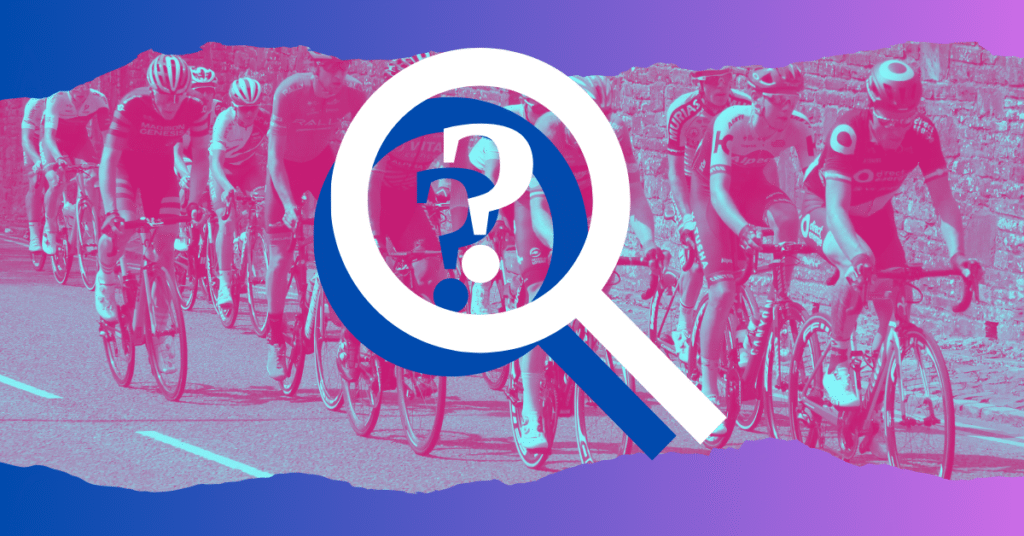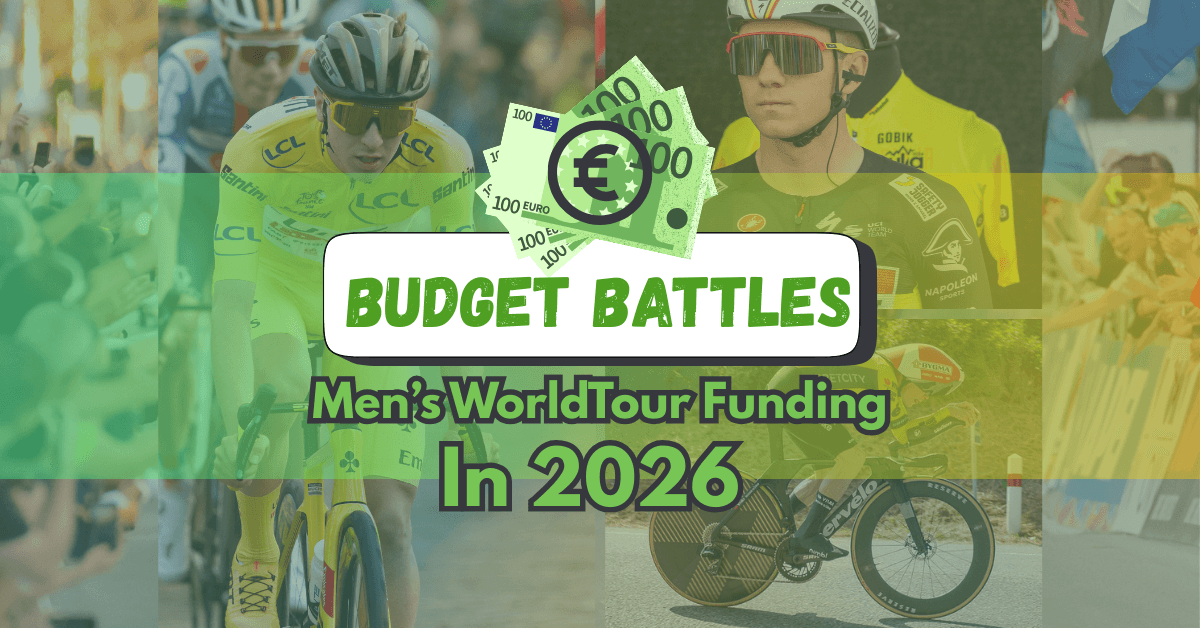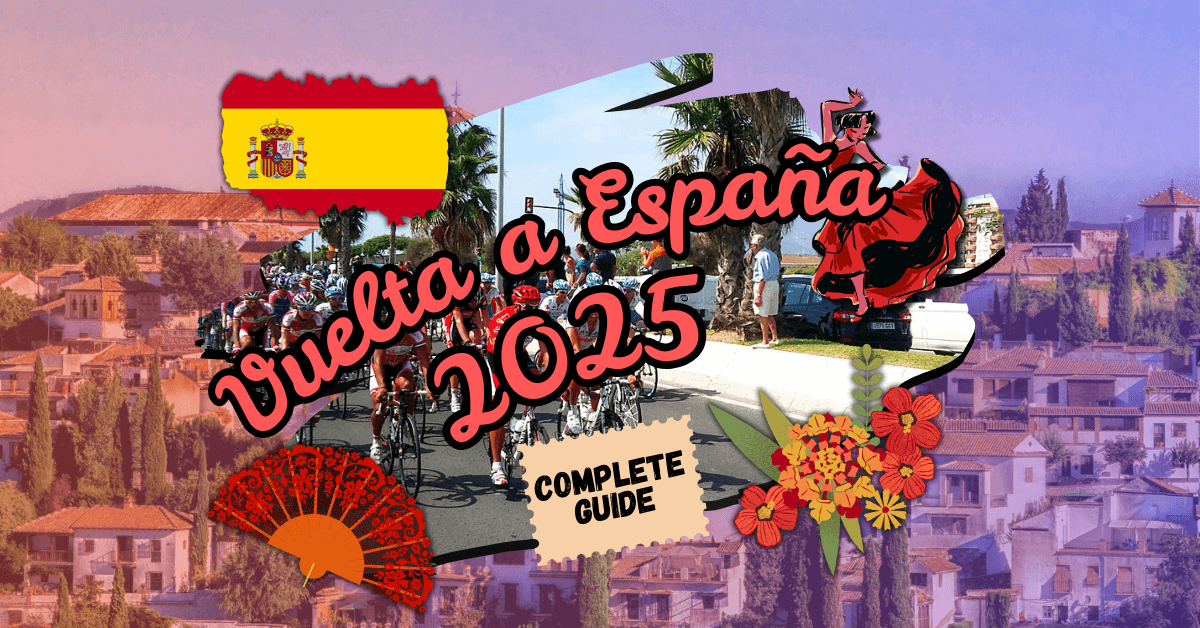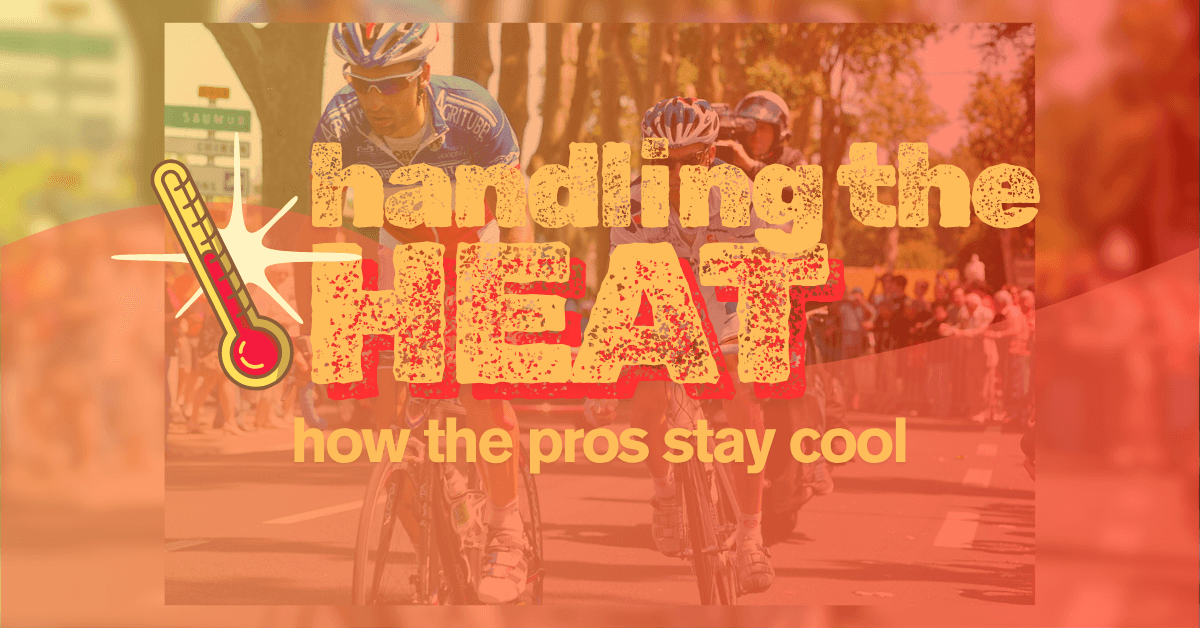What do most people find confusing or difficult to understand about pro cycling? Here are 15 common misunderstandings from new fans or folks outside the sport, and the truth behind them.

Introducing friends to cycling as a cycling superfan can be a daunting task. I got a few curious questions from friends and colleagues after the first season of Netflix’s Tour de France: Unchained aired in 2023. While I admit I’m probably one of the only cycling fans they know, I was surprised they cared enough to check out the show in the first place. I’m not sure I did a perfect job of untangling the ins and outs of my favorite sport. After all, Unchained isn’t the best introduction — and the sport of cycling seems confusing enough as it is without Netflix drama getting in the way.
Because what is it about cycling that seems to confuse so many people? If you talk to the average person with a baseline awareness of cycling as a sport (or, at least they know about the Tour de France), they might give you a few reasons why they aren’t really interested in it. It’s slow, too boring. It’s an “old people sport.” It’s confusing. The races are too long, and they’re only on during the morning hours (speaking as a US fan here.) And the scoring doesn’t really any make sense.
All of these reasons may sound a little weird to people who DO like cycling. But even the most committed fans can admit that the sport isn’t easy to “get” on a surface level, and most people need a little help to join the bandwagon.
Where does the confusion come from?
Part of the solution to confusion is understanding where that confusion stems from. For most people, it’s a lack of exposure to pro cycling. Sure, most people can probably name a Grand Tour — the Tour de France. Do you think they can name a second? Maybe not! Outside of a few countries with high levels of cycling fandom, following the pro peloton remains a niche activity. Even France (which, duh) only counts around 28% of its population as “cycling fans.”
And when something is brand new to most people, there’s a lot of room for misconceptions.
That’s the impetus for this article. Let’s clear up some of the more common misconceptions and points of confusion among new cycling fans or people who are curious about the sport. While this is not an exhaustive list or exploration of all the tricky aspects of professional cycling, it offers a starting point. The next time a curious friend asks YOU about the Tour de France (or, heaven forbid, Tour de France: Unchained), you’ll have a few of these answers in your back pocket.
Without further ado, here are 15 common misconceptions about pro cycling.
Embed from Getty ImagesCommon Mix-Ups About Pro Cycling
1. Every professional cyclist aims to win the General Classification (GC) in Grand Tours.
This is the most common point of confusion for most new cycling fans or the cycling-curious. After all, why would the riders be riding in the race if they didn’t want to win the overall prize?
Of course, in reality, only a handful of riders on a select few teams are actually GC contenders. Even among that select subset, many riders know they cannot win the overall GC, and instead aim for a top 10 finish or a stage win.
The vast majority of professional cyclists are specialists, such as sprinters, climbers, domestiques, or rouleurs, with specific roles within their team, These riders may aim for a stage win, a day in one of the leader’s jerseys (including the points or king of the mountain jerseys), or simply to support their team leader through the race.
Read more: Explaining Cycling’s Sorting Hat
2. Professional cyclists constantly push maximum effort throughout a race.
It’s easy to see why someone new to pro cycling might think that the riders push full gas from the start to the finish. However, this is far from true. The pros spend a significant chunk of time drafting, conserving energy, talking to other members of the peloton at a conversational pace. Key moments such as climbs, sprints, or attacks are where they unleash explosive power.
In addition, some riders excel at longer-duration climbs and efforts, while others prefer spending bursts of energy. This distinction can make the difference between, say, a breakaway rider (who has to expend a lot of extra energy going solo) and a sprinter (who can hide out in the peloton until arrival at the finish line.)
3. Professional cyclists are primarily concerned with their average speed during races.
This point of confusion seems to stem from the idea of overall time deciding the GC contest. After all, if you want to have the shortest time to the finish, you need to go faster than your competitor, right? While speed is important, professional tactics often involve bursts of power and then coasting or drafting. This is much better strategically than maintaining a constant high average speed.
Attacks can leave an opponent unaware at the foot of a big climb, allowing for time gaps to be created between competitors. Strategic positioning and conserving energy are often much more important than a consistently high average speed.
Embed from Getty Images4. Professional cycling is an individual sport.
I know, I know, how does it make sense — especially when you’re used to seeing the jerseys of different colors work together on the road? But there can only be one winner, and many who are new to cycling don’t see how cycling could be a team sport when this is the case.
It’s true that there are individual winners for each race. But no one can win on their own. Cycling is profoundly a team sport. Domestiques sacrifice their own chances to support their leaders: pulling at the front, fetching bottles, and protecting GC contenders. And if a bad day puts a rider out of contention, he’s expected to fall in line and help his teammates as much as he can.
The sacrifice and team effort are both part of what makes cycling beautiful and unique as a sport!
Read more: An Ode To the Domestique
5. Team orders in professional cycling are always strictly followed without question.
Once you learn that the team effort is everything in cycling, it only makes sense that the team must work together flawlessly. While cheerful books like Jumbo-Visma’s “Het Plan” might have you believe that every team plan works out to perfection to secure the victory, the 2023 Vuelta a España showed that nobody’s perfect.
A team hierarchy’s is strong. However, there’s often communication and negotiation between key players, especially if a rider feels exceptionally strong or sees an unexpected opportunity on a stage. Riders must always weigh their own chances against helping the team when in a support role, and that occasionally leads to conflict, especially on teams with multiple “leaders” at the same race.
Embed from Getty Images6. Professional cyclists only train on the road.
Sure, pros get the miles in, but they don’t just ride, ride, and ride some more to get ready for the races. Gym work is an important part of the routine for most cyclists. Just like the amateurs who do the same thing, they build strength and conditioning, and most importantly variety, by cross-training.
Some pros even incorporate some off-road riding, like mountain biking, gravel, or cyclocross, in the off-season. That can be a great way to stay in shape through the winter.
7. Professional cyclists only ride road bikes.
Okay, discount what I just said about training off-road, and just think about road races. Does it seem absurd that cyclists might choose to ride anything other than a standard road bike in a race?
But don’t forget about time trial bikes, or TT bikes. These bikes are specialized equipment used for individual time trial stages, which require intense commitment to aerodynamics. Novice fans may be able to spot them by their unique handlebar configuration, which allows riders to lean down and rest on their elbows over the bike.
Commitment to the time trial is real. Riders will often train in wind tunnels and get their time trial skinsuits tailored down to the millimeter for their races against the clock. And when they’re alone on the road with only their legs and no other strategy against their competitors… they’ll take any advantage they can get!
8. The most expensive or most “aero” bike always wins in professional races.
There seems to be some confusion about why professional cycling teams spend so much money on bikes and equipment if it’s not a competitive advantage. Professional race bikes are top-of-the-line. But keep in mind that the difference in performance between the very best models from different manufacturers is often marginal!
So how is the win settled? It’s not just about who has the best or lightest bike. Rider power, tactics, and race circumstances are far more decisive.
9. Professional cyclists are always clean-shaven.
Most pro cyclists choose to shave their legs. That motto does not extend to their face. While I’m not sure whether any research has been done into this topic, having hair on your face does not confer an aerodynamic disadvantage.
Thus, facial hair is a common sight in the pro peloton. There have been some… interesting mustaches this season. Some riders go for really interesting looks, like Quinn Simmons.
It’s also important to note that leg shaving is primarily for practical reasons, and not just about being “aero.” Wound care and massage are also easier with less hair in the way. This may be why cyclists choose to shave other parts of their body as well.
Embed from Getty Images10. Being a professional cyclist means you’re always fit and healthy.
New cycling fans often think that the pros must be some of the healthiest folks in the world. Think again! Pro cyclists are actually highly susceptible to injuries from crashes, illness (due to extreme exertion and travel), and overtraining. Their careers are often a constant battle against physical setbacks. Even Tadej Pogacar, one of cycling’s most unstoppable athletes, didn’t participate in the 2024 Olympic games due to fatigue after a grueling Tour de France.
This season, some riders were set back by illness. Mattias Skjelmose recently announced that he will not ride the Tour de Suisse after a bad bout of a stomach bug. And many fans are still waiting to see whether Christophe Laporte will make a full recovery from cytomegalovirus before the end of the season, after seeing him skip out on some of his main goals for the year. Wishing them a full recovery for the rest of 2025 into next season.
11. Professional cyclists eat whatever they want because they burn so many calories.
I can’t speak for everyone, but after a long ride, I’m always starving. But that doesn’t mean the pros feel the same. While their caloric needs are immense, professional cyclists adhere to very strict, scientifically planned diets. What they eat day-to-day is meant to optimize their performance, recovery, and maintain their specific power-to-weight ratio. Cycling teams employ nutritionists and chefs to ensure that their athletes eat right.
But wait! Have you seen a cyclist downing a can of Fanta at the finish line or from a musette bag on the road? Actually, pro cyclists often drink sugary soda after the race to quickly replenish their carbs after the effort of the ride. Another popular choice is tart cherry juice, which can also boast some anti-inflammatory properties.
Read more: Why Do Pro Cyclists Drink Tart Cherry Juice?
12. Race radio is the only way professional teams communicate during a race.
Have you noticed how cyclists are always talking into their little earbuds at important moments in the race? New cycling fans often wonder what that is all about, and whether radio communication dictates team strategy.
Race radio can be crucial, but it’s not the only time for strategy. Hand signals, shouts, and pre-race briefings are other ways that teams — and riders across teams who work together, like in a breakaway — communicate within the peloton. Besides, radio signal can be poor in some races. Or there are some races where radios aren’t allowed at all… and that number may be growing in the future!
Embed from Getty Images13. Professional cyclists are all naturally gifted athletes who don’t need to work hard.
It’s true that we hear a lot about genetic predisposition in cycling. Stories like Jonas Vingegaard’s massive lung capacity take on an almost mythical role in our understanding of cycling, and often, become our only way to explain the results we see play out in high-level races like the Tour de France.
But let’s not forget: professional cycling demands an incredible work ethic, discipline, pain tolerance, and countless hours of dedicated training and sacrifice. Many of the best cyclists in the world, such as Giro d’Italia winner Tom Dumoulin, retired early due to the stress and intensity of life as a high-level endurance athlete. While genetics may play a part, the bigger part will always be hard work and sacrifice.
14. The season for professional cyclists is only during the major Grand Tours (Giro, Tour, Vuelta).
The Giro is in May, and the Vuelta finishes in September. Do these races bookend the professional calendar? No, not quite! The professional cycling season runs from roughly January to October. The vast calendar of races take place all over the world, including the Tour Down Under in Australia, where competitors enjoy a bit of summer weather in the middle of the northern hemisphere’s winter. Sounds nice, huh?
One-day Classics, smaller stage races, and national championships make up a full calendar and are differentially important for various specialists and team goals.
15. Winning a Grand Tour automatically means you’re the best cyclist in the world.
Yes, winning a Grand Tour is a monumental achievement. And yes, many cyclists are extremely proud to win even a stage of a Grand Tour! But “best” is subjective. Different riders excel in different disciplines. A Classics rider, who may have different interests, trained skills, or even body type from a GC rider, shouldn’t make it a sticking point that they’ll never win a Grand Tour. By the same token, a Grand Tour winner will not be dominant in all areas.
New cycling fans often stick to watching Grand Tours, but I’d encourage them to expand their interests outside of that. You never know when you might fall in love with cobbled classics, or one-week stage races, or even gravel racing!
Embed from Getty ImagesDid you notice any misconceptions you’ve heard before in this list? I hope this helps you feel empowered to share your love of cycling with friends, family, and even total strangers (I won’t judge) this Tour de France season. And when they get a little confused over what a mountaintop finish is, why a rider is helping his teammate instead of going for the win, or which jersey is the blue one, then you’ll be ready to bring them enlightenment!
… Actually, on second thought, if they’re asking that last one, they might be in good company:
Do you like sharing your cycling fandom with those around you? Who have you introduced to cycling in your life? Let us know in the comments or on social media! ★










Leave a Reply